HEFLO enables process analysts the ability to publish and share BPMN process documentation on a collaborative portal.
This portal will then give the possibility to other users of the environment to access the documentation of the published process.
In addition to this feature, the portal allows users to interact to ask questions or suggest process improvements.
Process analysts can then improve the processes concerned. The objective is to allow users to have access to up-to-date documentation of the various processes.
Publish process documentation:
Before publishing a BPMN process on the portal, it must first be modeled. To learn more about BPMN 2.0 modeling, we invite you to discover our Academy: HEFLO Academy.
Training on BPMN 2.0 modeling will allow you to use BPMN elements correctly. Here is an example of a course available in the training: Business Process Modeling with BPMN 2.0.
Several other features are available in the HEFLO process editor to improve the modeling and documentation of your process:
- You can document your process at different levels. To find out more: Business process documentation.
- You can add attachments at different levels of your process. For more information: Attaching files to BPMN diagrams.
- It is possible to associate a process to a category. To learn more: Organizing business processes with categories.
- You have the option to choose a process owner. To learn more: Process Owner Functions.
After you model your process, you can publish the process documentation to the process portal.
To do this, go to the process editor, click on “actions” then on “publish documentation”:
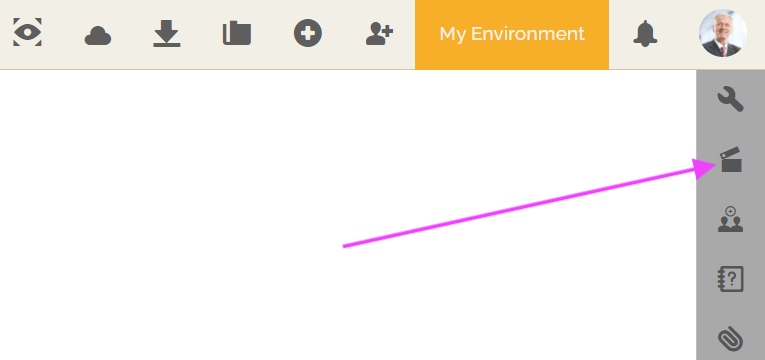
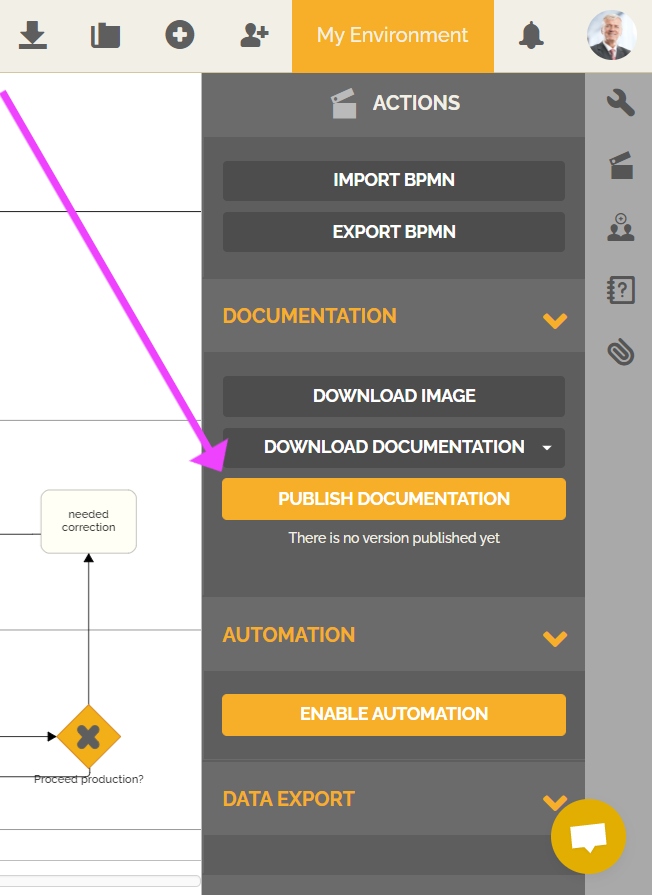
You will get a dialog box giving you two choices:

Choice 1: “Just publish the process”.
By choosing this option, the documentation of this process will be published in the portal without any user being informed.
If you have designated a process owner, he will receive an email and a notification to warn him that a process is awaiting validation from him in order to be published.
To learn more about process owner functionality: Process Owner Functions.
Choice 2: “Publish the process and notify users”.
By choosing this second option, you have the possibility to configure and send an email to a list of users in your environment. You can customize this list to notify only relevant people.
After the process documentation is published, the process analyst will see this message appear in the process editor:
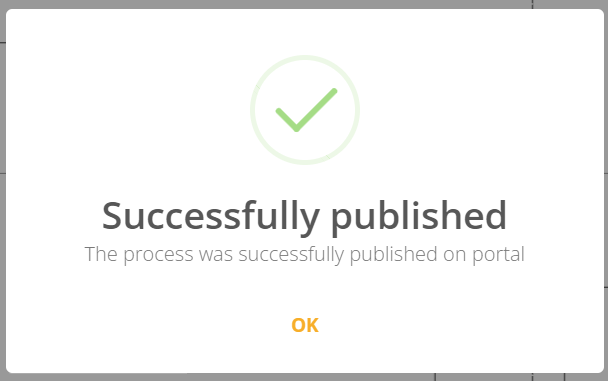
If a process owner has been chosen for the process in question, then the process analyst will see this message:
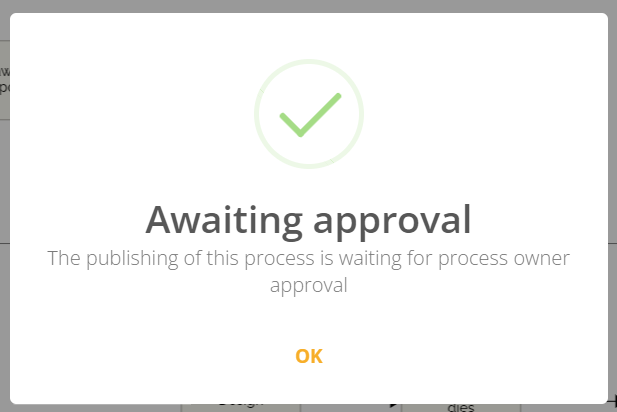
Once published, the process documentation is now visible to other users who have access to the process portal:
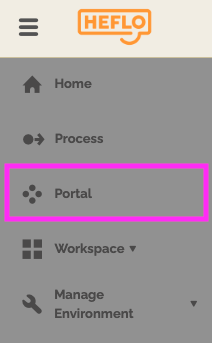
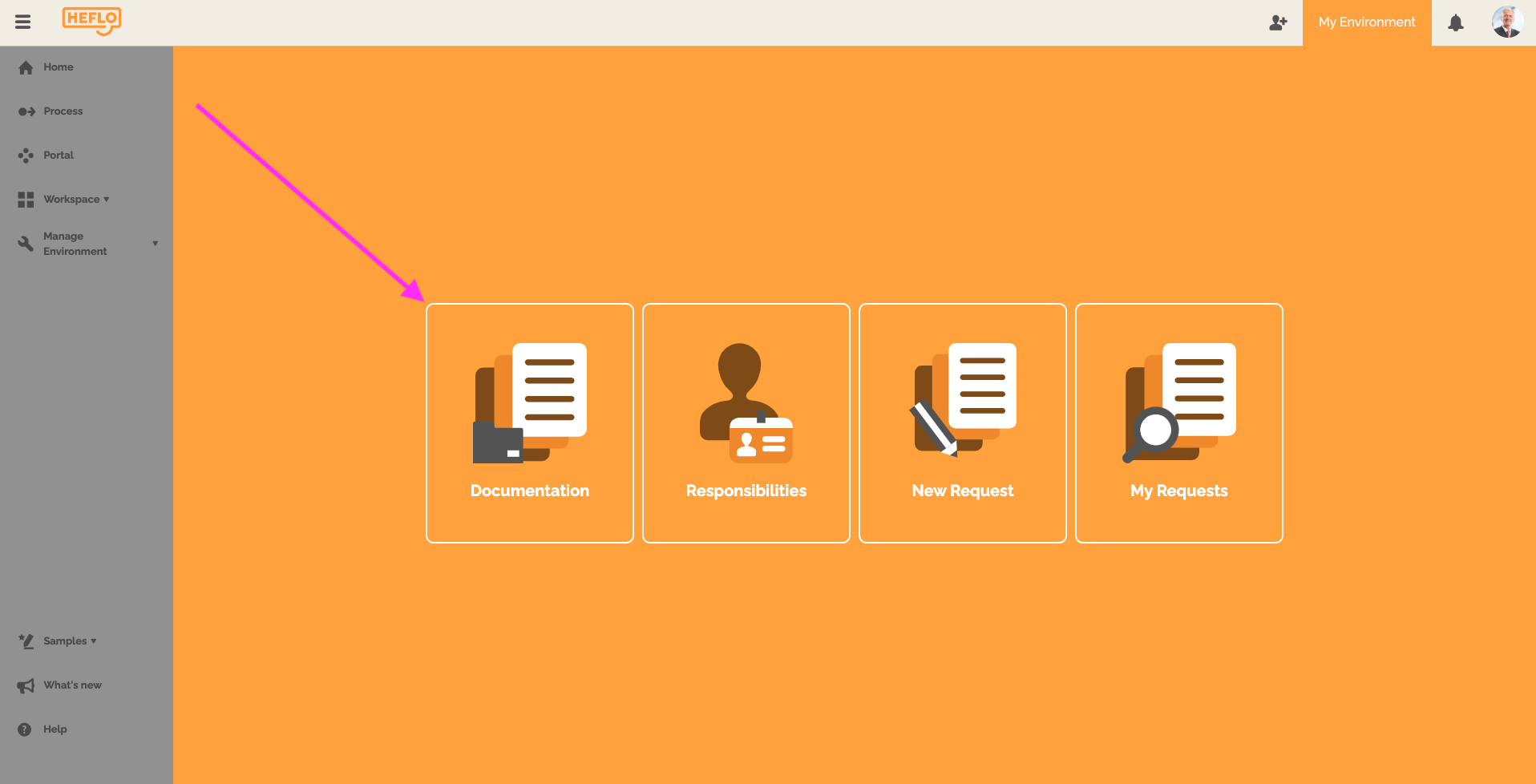
To learn more about user roles in HEFLO: Roles on HEFLO.
The user can then have access to the process documentation that has just been published by the process analyst.
Depending on the logged in user’s role configuration, he has access to a list of published processes:
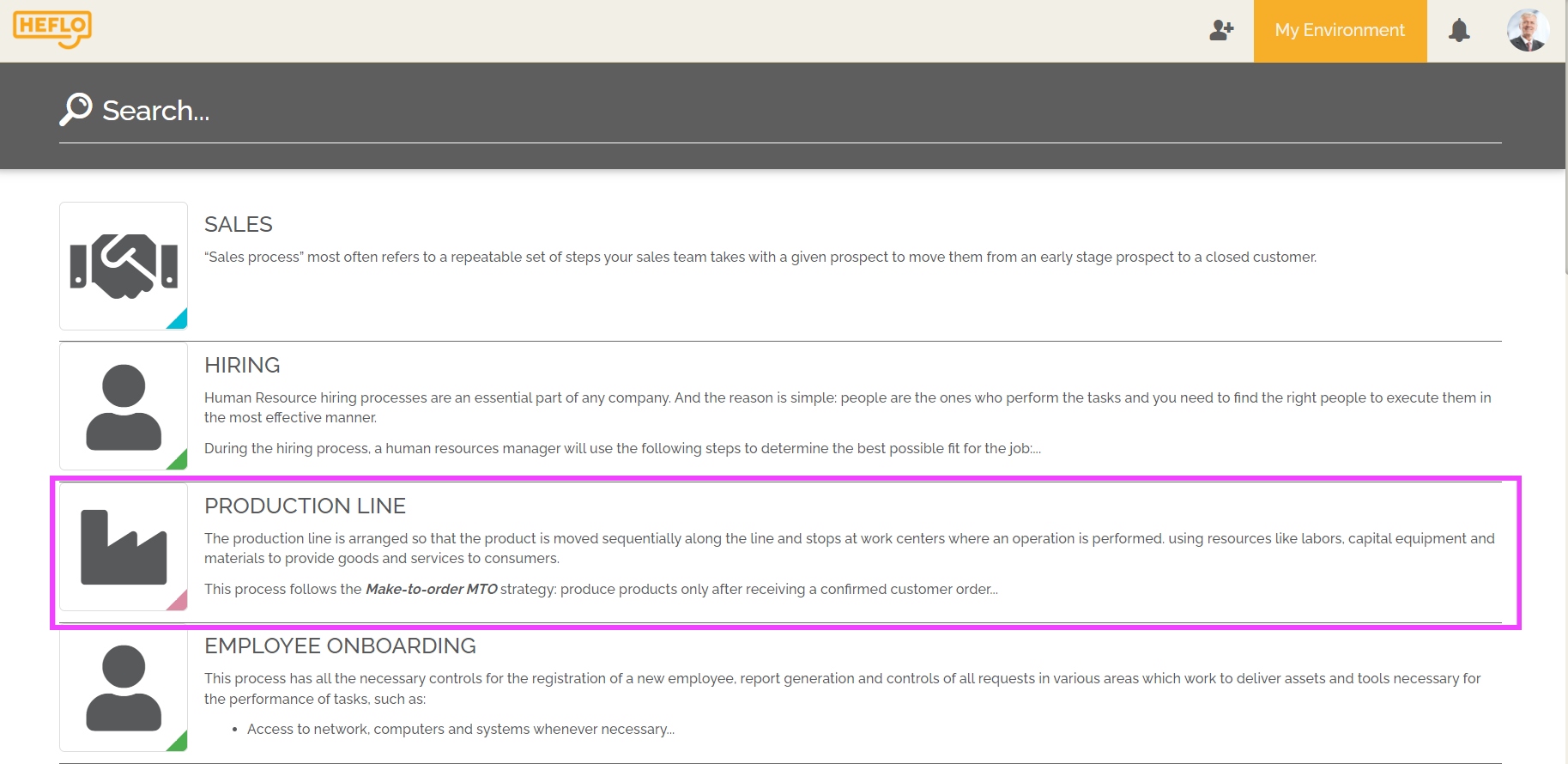
If a process landscape has been defined as the home page, then the user will be able to navigate through the process documentation from this process landscape:
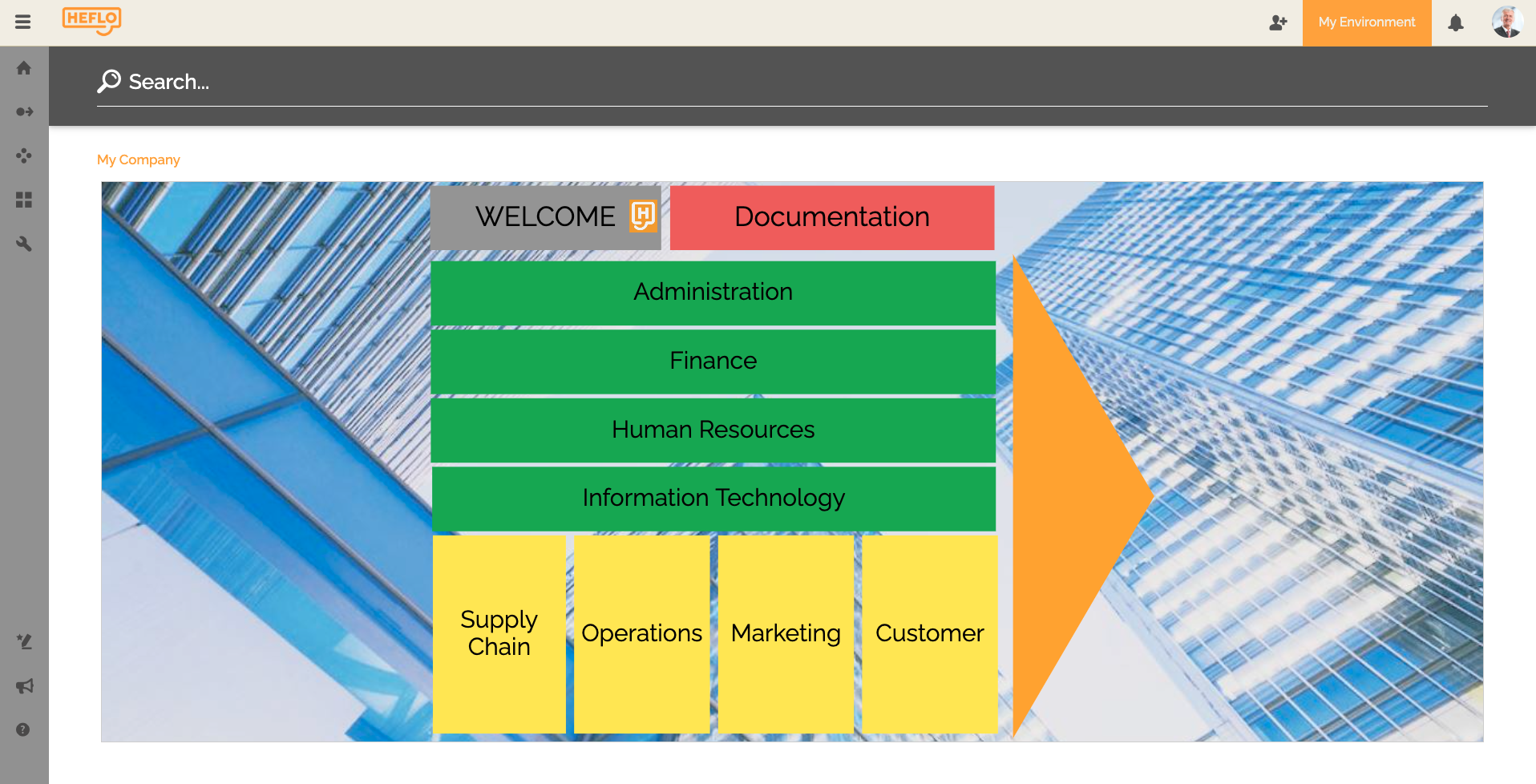
To learn more about process landscapes: Value chain diagrams.
Improve processes:
Users who have access to the processes published on the portal can comment and make suggestions for improvements. These comments will be visible in the documentation of the process concerned for all users who have access to it:
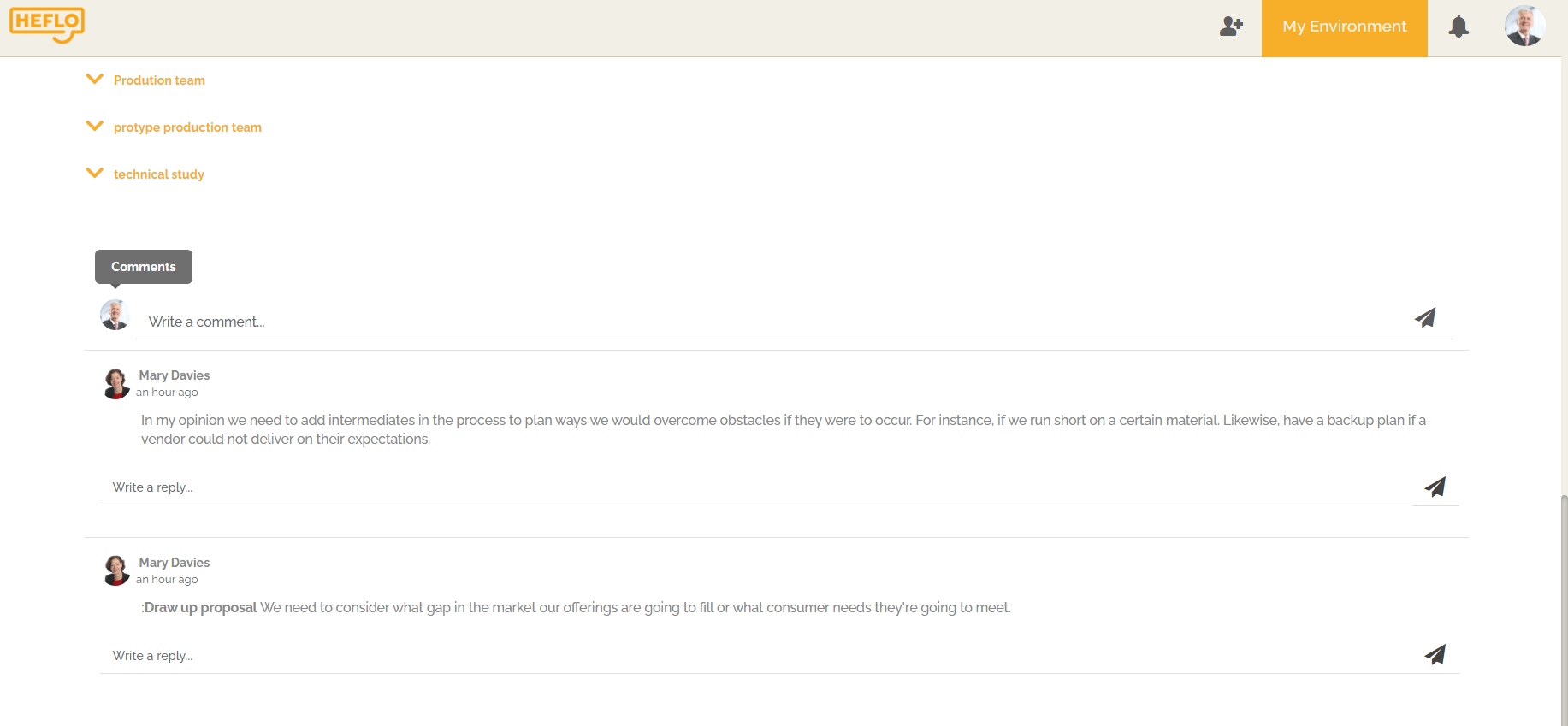
They will also be visible in the process editor for the various process analysts.
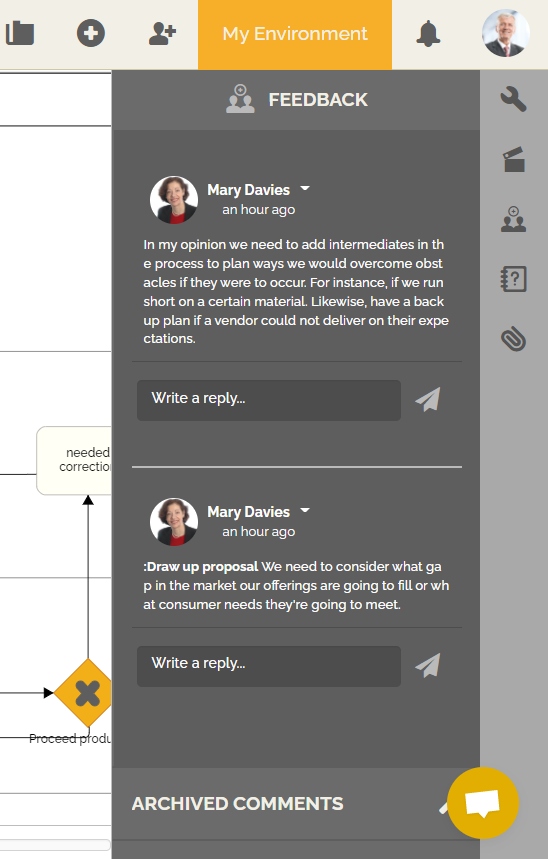
The process analyst can then respond to this comment and start a conversation. He can also archive comments if he wishes, to learn more about: Archive feedback
It is not possible to modify the version of the process that is currently published in the documentation portal, or in automation.
There is a message in the process editor indicating that these changes are not possible:
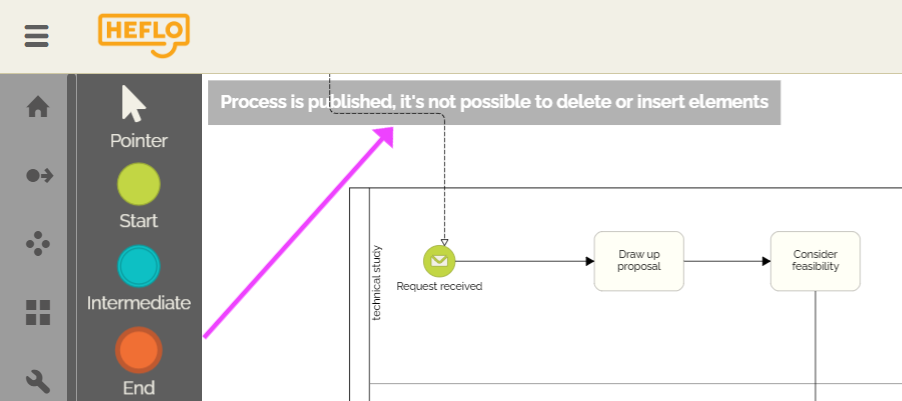
The objective is to ensure the sharing of reliable information with your users, and to avoid changes to documentation that is already available to your users.
There are two methods to improve and make changes to a BPMN process:
Without keeping the history: This method is often used to correct a modeling error, or make a minor improvement.
First you need to “suspend portal”, you will find this option in “actions”:
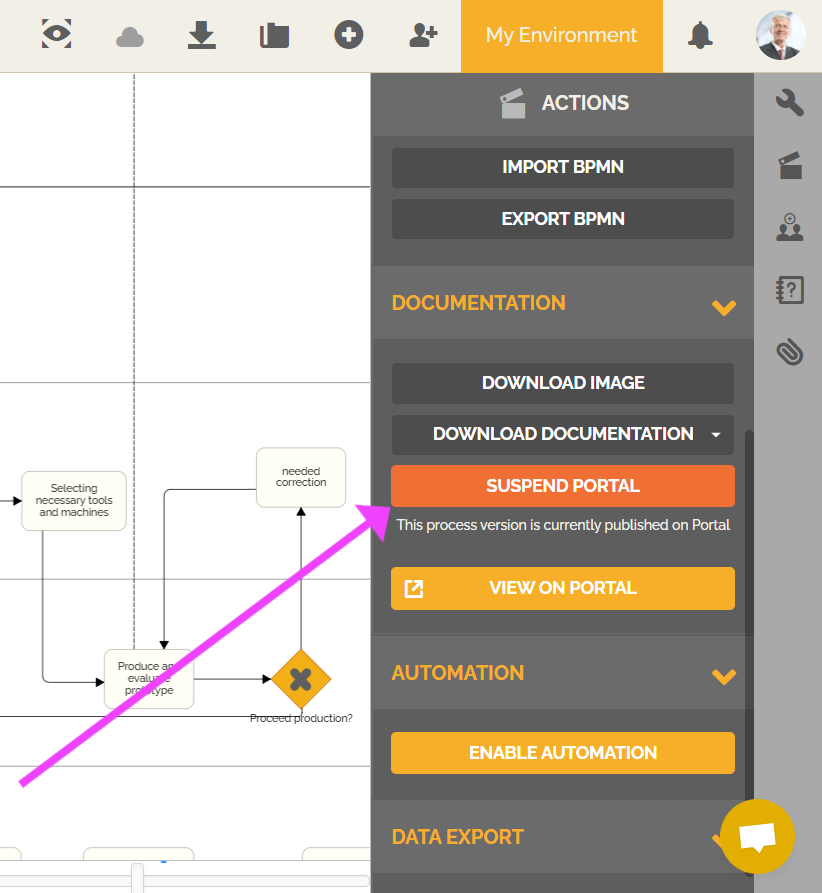
From then on, you can edit the process and make the changes you want.

When you are finished, you can click on “publish documentation” again to make the documentation for this process available in the portal as seen previously.
Keeping history: This method is used to make major improvements regarding your process.
It is then important to have the history of these changes in order to be able to analyze the evolution of the process.
You need to “create new version”, you will find this option in “actions”:
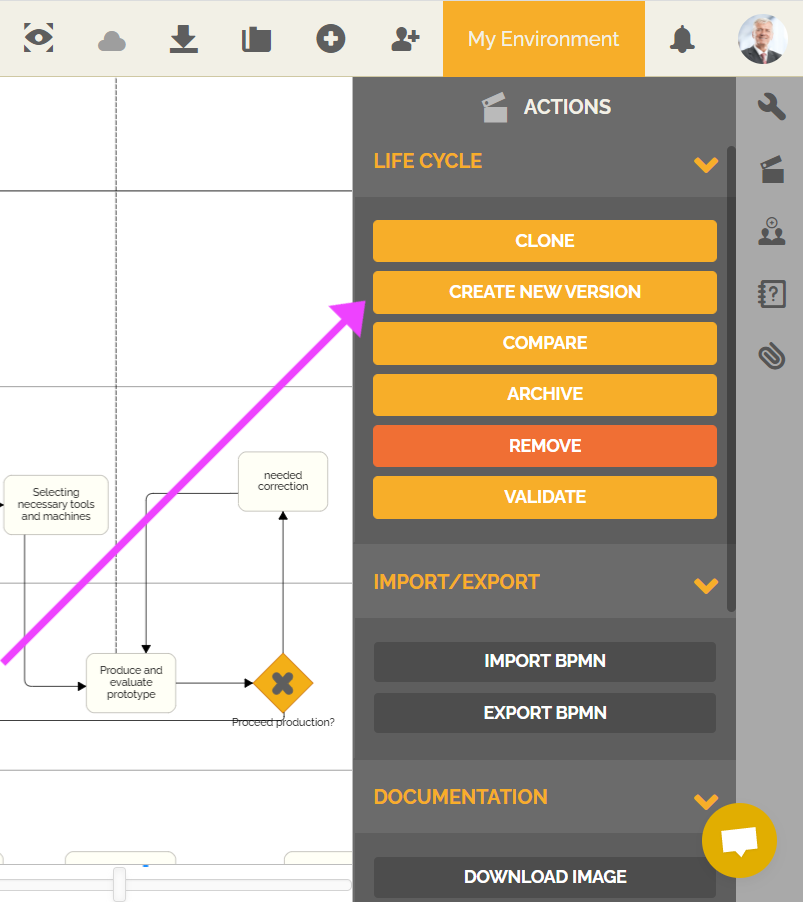
From then on, a new version of the process will be created and you can then make the changes you want:
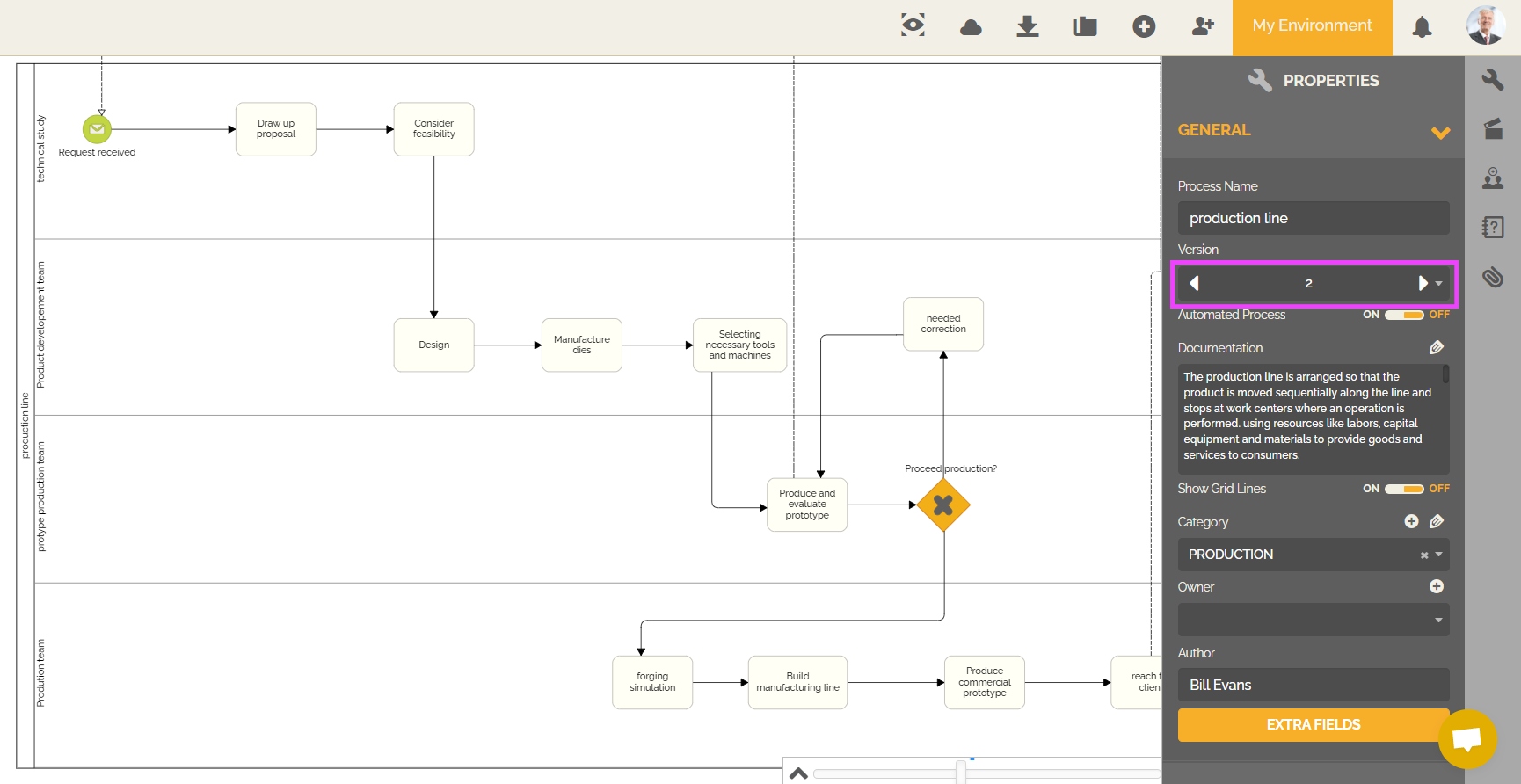
The process analyst can then navigate through the versions, and make changes to the new version. The old version allows you to keep the history of modeling and documentation. Read more about process versions: Improvement cycle and version control.
The process analyst can also compare the different versions of the same process to analyze the evolutions:
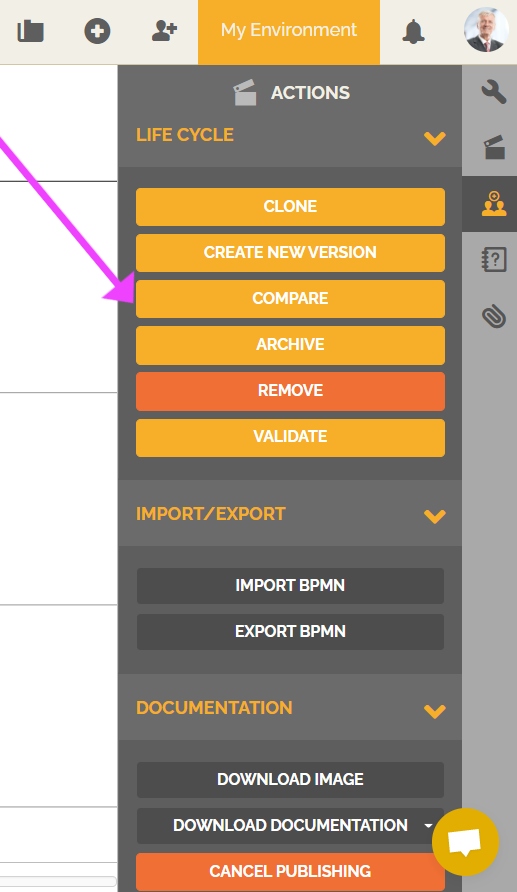
To learn more about this feature: Difference between diagrams.
Once the modifications are complete, the process analyst can then publish the documentation for this new version:

Only one version of a process can be published. This concerns both process documentation and process automation.
When the process analyst publishes the documentation for the new version, it will then replace the documentation of the previous version.
If this BPMN process is linked to a process landscape, it will be necessary to ensure that the association between the element of the process landscape and this BPMN process is made on the desired version. To learn more about process landscapes: Value chain diagrams.
